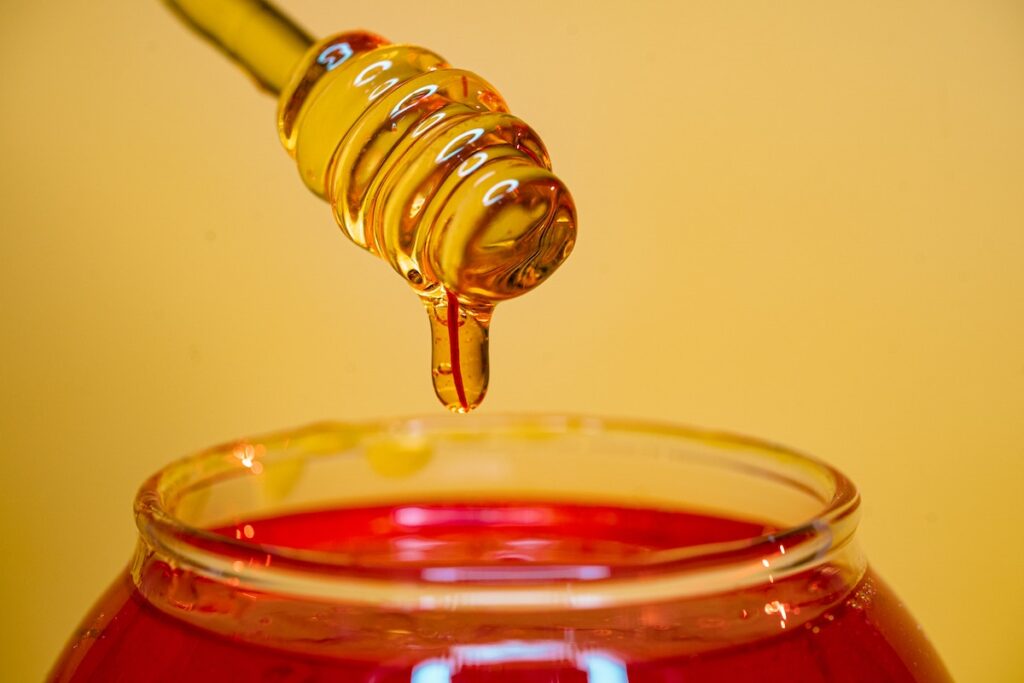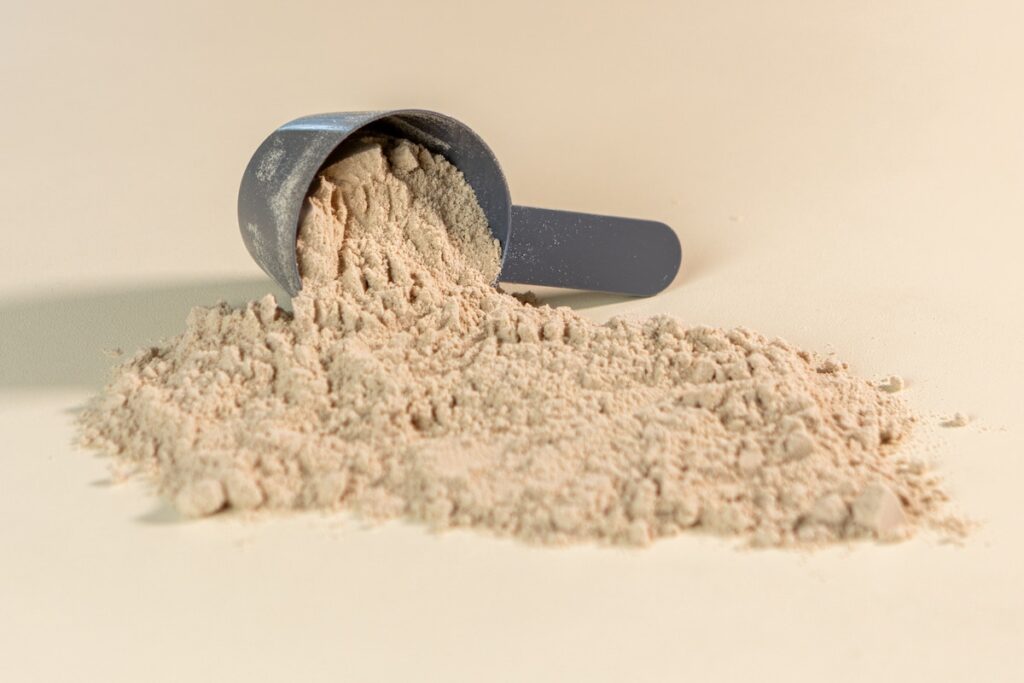The use of hydrogen peroxide in hair care is a subject that raises many questions. Commonly used to bleach or lighten hair, this chemical substance, also known as hydrogen peroxide, is both popular for its rapid results and feared for its potentially aggressive effects on the hair fibre. Using hydrogen peroxide? Is it a good or bad idea?
What is hydrogen peroxide?
Hydrogen peroxide is a powerful oxidising agent which releases oxygen when it comes into contact with other substances, which explains why it is used in so many different ways, from antiseptics in first-aid kits to hair whitening agent.
In hairdressing, it is best known for its role in the discoloration and colouring, where it is used to open the hair cuticles to remove or deposit pigments.
Its concentration generally varies between 3% for domestic use and up to 12% in professional formulationsThe latter is used for more advanced lightening or bleaching.
Although commonly used, it must be handled with care, because high concentrations can damage hair and skin
How does hydrogen peroxide affect hair structure?
Hydrogen peroxide penetrates the cuticle to reach the cortex, where natural pigments are found. As an oxidising agent, it causes a chemical reaction which breaks down these pigments, leading to lightening or discolouration of the hair.
The degree of lightening is influenced by the volume of hydrogen peroxide used. The volume indicates the oxygen release capacity, and therefore its oxidation potential.



The choice of dosage depends on the desired effect. A higher volume means more oxygen is released, which intensifies the lightening action. For moderate lightening or bleaching of fine hair, a 20-volume hydrogen peroxide is often recommended.
It is crucial to follow the dosage recommendations to minimise the risk of damage, as too high a concentration can damage the hair structure, while too low a concentration could be ineffective.
What risks can hydrogen peroxide pose to the hair?
Hydrogen peroxide can pose a number of risks to hair if not used correctly.
- It can cause excessive dryness because it eliminates the sebum that protects the hair shaft.
- Repeated use or too high a concentration can lead to brittle hair and the appearance of split ends.
- The discolouring effect of hydrogen peroxide can also lead to undesirable change in natural colour or coloured hair, sometimes leading to coppery or greenish tints due to a reaction with certain pigments.
- The scalp may also be affected, with risks of irritation or chemical burns, especially if the skin is sensitive or if the product is left on for too long.
It is therefore essential to follow the instructions for use and choose the right amount of hydrogen peroxide for your hair type and desired effect. A preliminary test on a small lock of hair and on the skin can help prevent adverse reactions.
How can hydrogen peroxide be used safely for hair care?
To use hydrogen peroxide safely in hair care, it is essential to follow a few guidelines:
- Choosing the right volume : Use the appropriate volume of hydrogen peroxide depending on your hair type and the desired effect. For light bleaching, a volume of 10 to 20 may be enough, while more intense lightening may require a volume of up to 30.
- Preliminary test : Always carry out a skin test to detect any allergic reactions and a test on a strand of hair to predict the result of the colour.
- Skin and clothing protection : Wear gloves and protective clothing, and apply a barrier cream around the hairline to prevent skin burns.
- Precise application: Use appropriate tools such as a brush to apply the hydrogen peroxide precisely and evenly, avoiding the scalp if possible.
- Laying time : do not leave the hydrogen peroxide to act for longer than the recommended time to avoid damage.
- Thorough rinsing : After the application time, rinse your hair thoroughly with cold or warm water to completely remove any chemical residue.
- Post-treatment care : use nourishing conditioners and hair masks to rehydrate your hair and repair potential damage caused by oxidation.
- Frequency of use : Limit the use of hydrogen peroxide to prevent damage building up over time.
- Professional advice : If in doubt, consult a professional hairdresser, especially for drastic colour changes or first-time use.
What are the alternatives to hydrogen peroxide for lightening or bleaching hair?
For those who want to lighten or bleach their hair without using hydrogen peroxide, there are several alternative methods. Ammonia-free dyes are a good option as they contain different compounds to penetrate and colour the hair cuticle.
Natural ingredients such as lemon or honey can also induce gradual lightening, especially when exposed to the sun. Lightening clay offers a gentler way to change hair colour without harsh chemicals.



As a result hair products like shampoos and conditioners lighteners are designed to achieve a more subtle, gradual effect.
Finally, professional colouring techniques, such as balayage or ombrage, also provide targeted lightening without the need for total bleaching.
Choosing the right method depends on the condition of your hair, your colour goals and your desire for maintenance. For best results and an approach tailored to your needs, we recommend consulting a hairdressing professional.
How do you care for your hair after a hydrogen peroxide treatment?
After a hydrogen peroxide treatment, it is crucial to give the hair extra care and attention to help repair and protect the hair fibre.
- Start by using gentle shampoos and moisturising conditioners specially formulated for chemically treated hair. These products will help restore lost moisture and soothe any scalp irritation.
- Incorporate hair masks into your weekly routine. Look for skincare products based on keratin, plant proteins, aloe vera or plant oils such as sweet almond oil and jojoba oil, which can help rebuild hair structure. Leave your treatment on for several minutes to allow it to penetrate deep into the hair.
- Avoid styling tools such as hairdryers and straightening or curling irons, as the heat can aggravate the damage. If you must use them, always apply a heat protector beforehand. Also, minimise subsequent chemical treatments, including colouring and straightening, to give your hair time to recover.
Following these steps will help keep your hair healthy after using hydrogen peroxide.
Good to know: a balanced diet rich in proteins omega-3 and antioxidants can also help repair and strengthen hair.
So, good idea or bad idea?
The issue of using hydrogen peroxide to treat hair is complex and requires a nuanced approach. There's no denying that it can significantly transform hair colour, but it also carries risks that shouldn't be overlooked.
The importance of scrupulously following the instructions for use and respecting the dosages is paramount in minimising potential damage. Adopting the right hair care products after treatment is just as crucial to restoring and maintaining healthy hair.
Before bleaching your hair with hydrogen peroxide, it's important to look at the current condition of your hair - its elasticity, and its ability to withstand chemical treatments - to determine whether hydrogen peroxide is a viable option or whether gentler alternatives would be preferable.
Carrying out a hair diagnosis, which is essentially a detailed assessment of the condition of your hair, can help you make the right choice.

